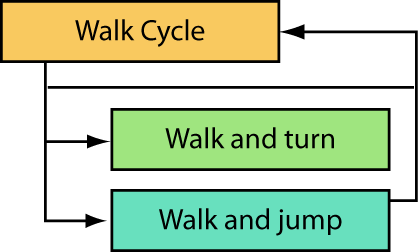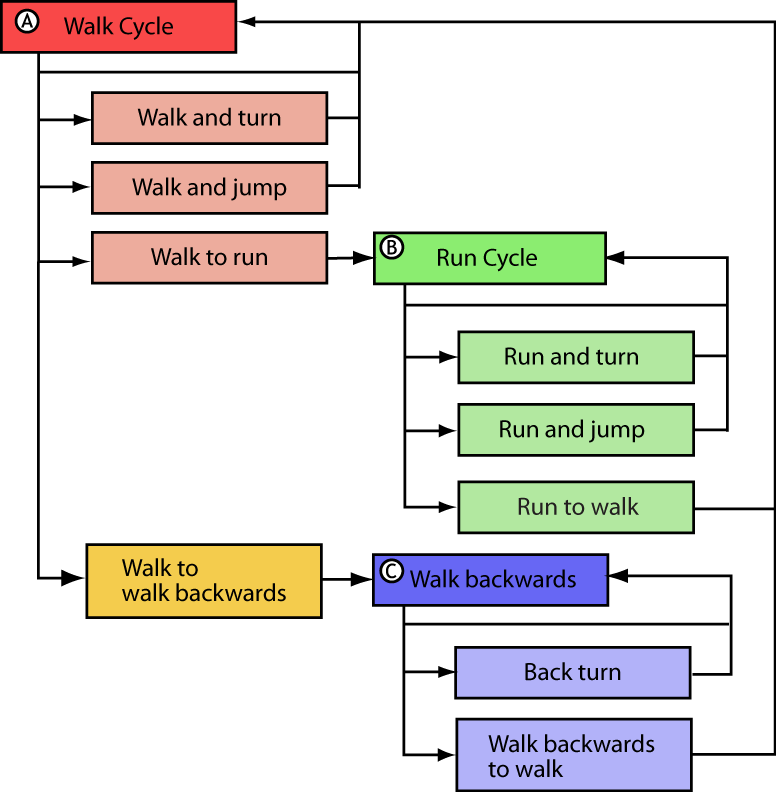Planning your motion clips before creating them helps to produce smooth transitions between motion clips. It is important to blend the right clips together so that the beginning and end of each motion clip blends with the previous or next triggered motion clip.
For example, when creating the “walk and turn” motion cycle, you must make sure its start and end match the “walk” cycle and “walk and jump” cycle. Each cycle can continually trigger itself before playing the triggered motion clip. In the following graphic, the “walk cycle” continues to loop until the “walk and turn” or “walk and jump” clips are triggered.

Trigger sequence with three motion cycles
A good walk cycle has no slides or jumps that mark the start and end of the motion clip. As the motion clip loops, a character walks forward without a hitch.
The transitions between these three motion clips are smooth because the start and end of each clip matches the start and end of the other clips. In fact, the walk cycle serves as the main looping cycle, or base motion cycle. The other two animation cycles are created so that their start and end match the start and end of the walk cycle.
Similarly, in the following graphic, the “rest pose” motion clip is the base motion cycle for the other two facial motion clips. The “rest pose and smile” clip and “rest pose and frown” clip both start and end with the same rest pose as the “rest pose” cycle, to create smooth transitions.

Trigger sequence for facial animation
When you create a series of animation cycles, the first cycle you create should serve as the base motion cycle for other animation cycles.
The more motion clips you use, the more useful base motion cycles become. When you plan to use a larger series of motion clips, with run cycles and other types of animation, it is helpful to use more than one base motion cycle.
For example, the following graphic shows an expanded set of motion clips, or trigger hierarchy, that includes motion clips for running and walking backwards, as well as walking forwards. The base motion cycles in this example are the walk, run, and walk backwards cycles (A, B, and C).
The start and end of the “run and turn” and “run and jump” motion clips match the start and end of the base motion clip “run cycle”. The “run to walk” motion clip is a transition clip whose start matches the “run” cycle, and whose end matches the “walk” cycle. All these factors must be considered when creating motion clips.

Trigger hierarchy for a set of motion clips A. Base walk cycle B. Base run cycle C. Base walk backwards cycle
The easiest way to create animation cycles is to use the Story window. To use them as motion clips in the Animation Trigger window, you then need to plot them to a character and save each animation cycle as a separate .fbx file.
 Except where otherwise noted, this work is licensed under a Creative Commons Attribution-NonCommercial-ShareAlike 3.0 Unported License
Except where otherwise noted, this work is licensed under a Creative Commons Attribution-NonCommercial-ShareAlike 3.0 Unported License